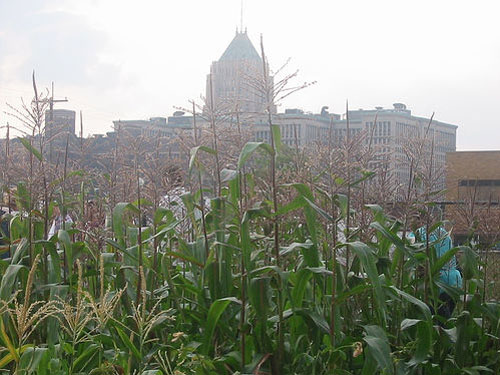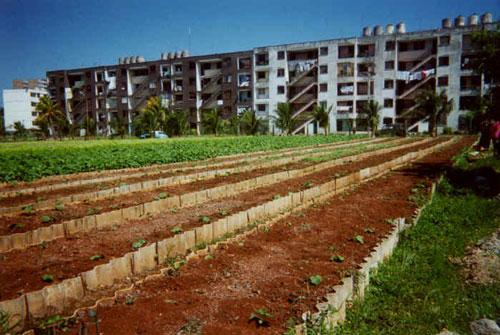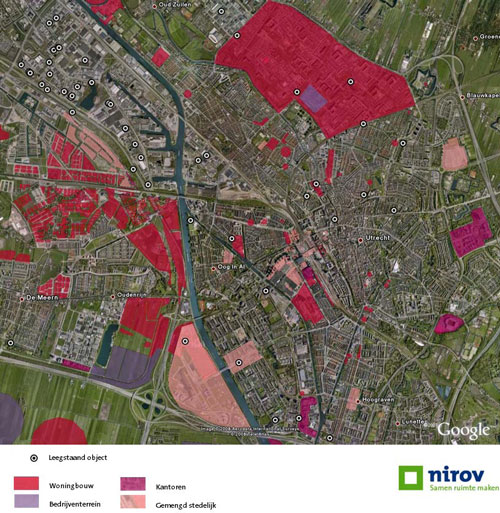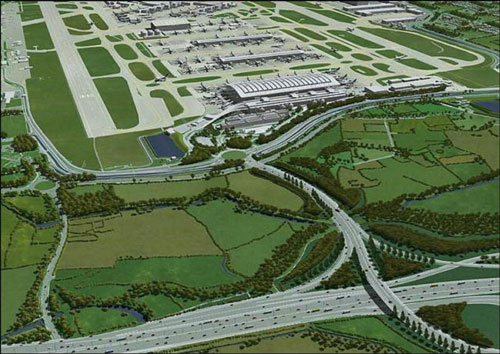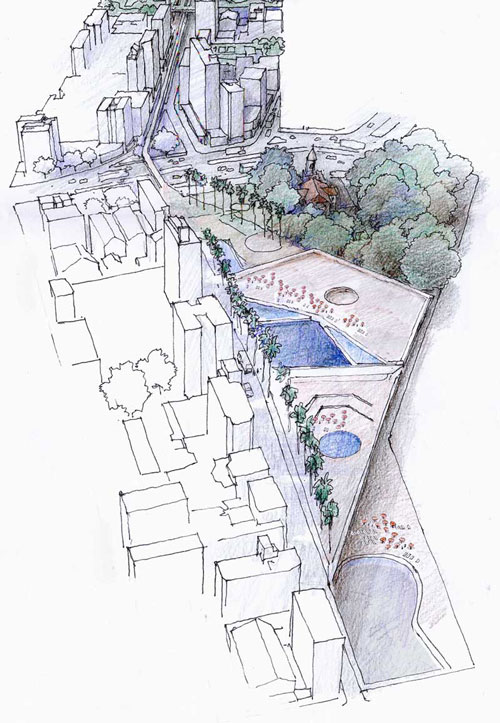Urban farming and big scale high productivity agriculture are not necessarily incompatible. Although the grassroot organizations, mentioned in the post below, would probably never suggest something of the sort, vertical farms also present a solution to our future problems regarding food production. On various levels, on top of and in between housing and offices, livestock could be kept and crops grown. A new type of hybrid infrastructural building has been conceived to accomodate this new urban rural function.
La Tour Vivante – Rennes, France, 2005. Atelier SoA architectes.
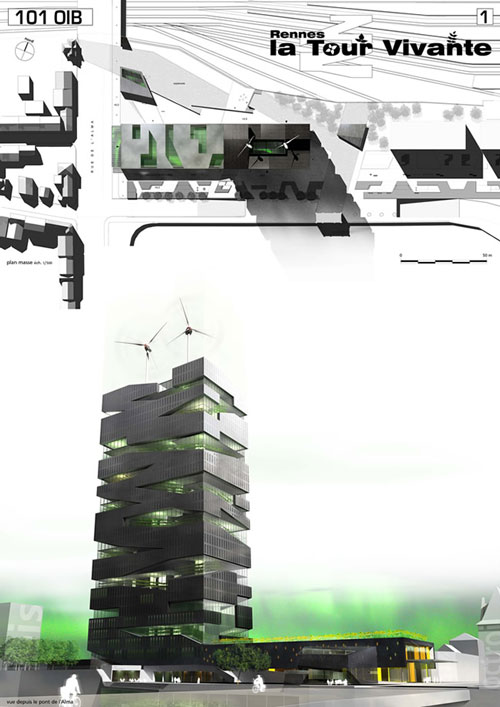
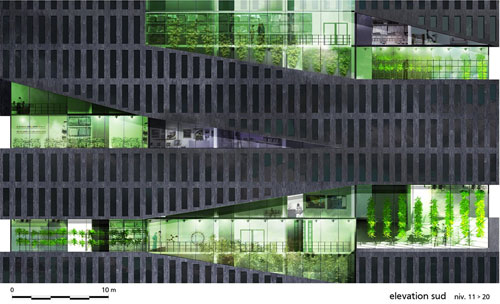
SoA architectes
www.ateliersoa.fr
Pig City -The Netherlands, 2001. MVRDV architects.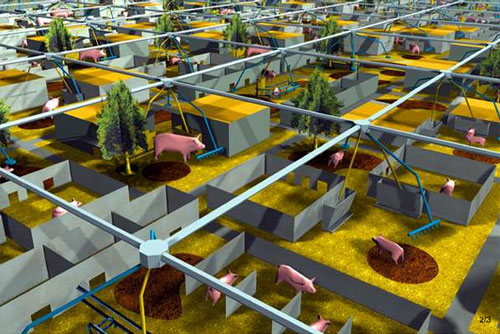
MVRDV architects
www.mvrdv.nl/_v2/projects/181_pigcity/index.html
More projects for vertical farms:
www.verticalfarm.com/Designs.aspx
